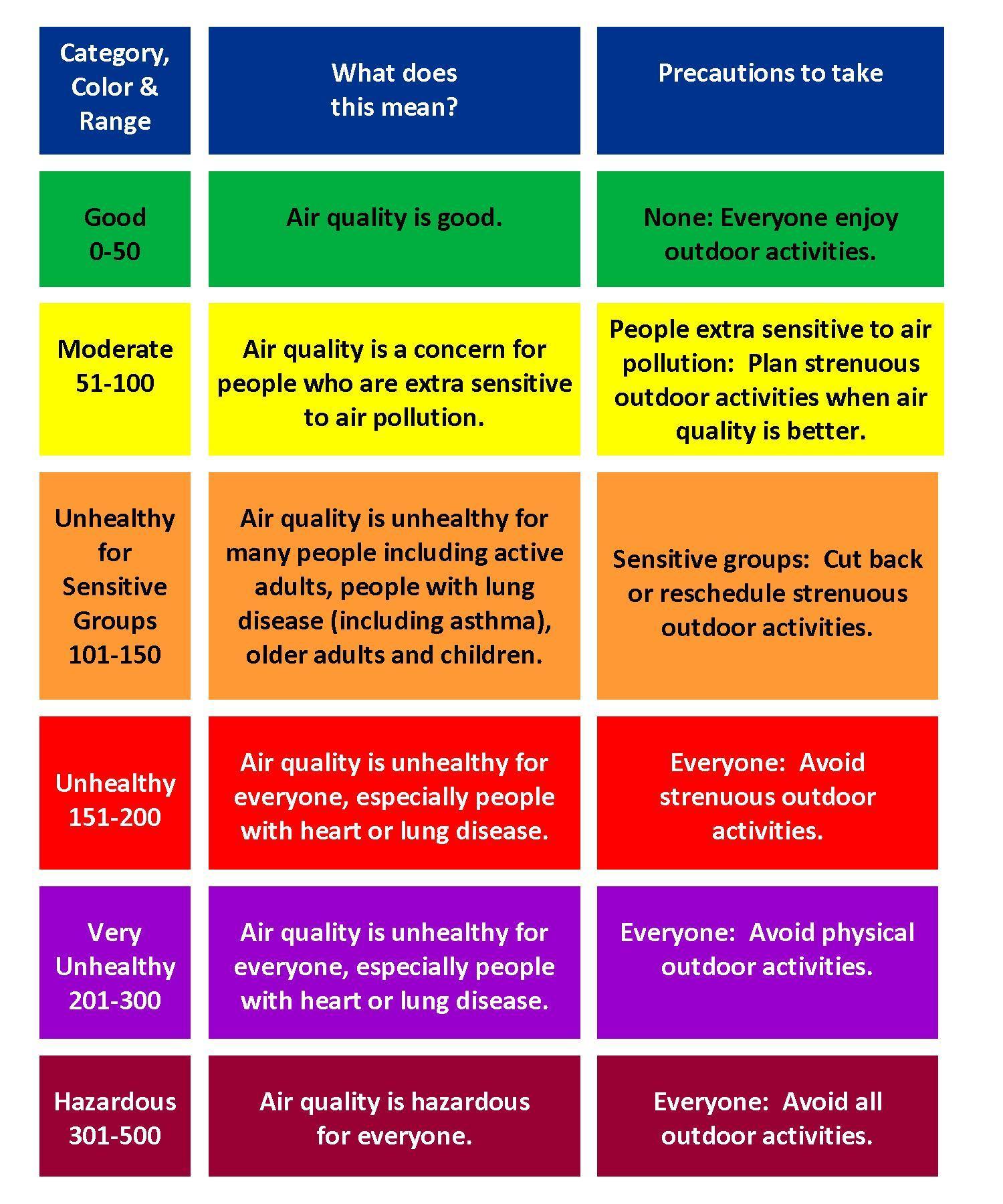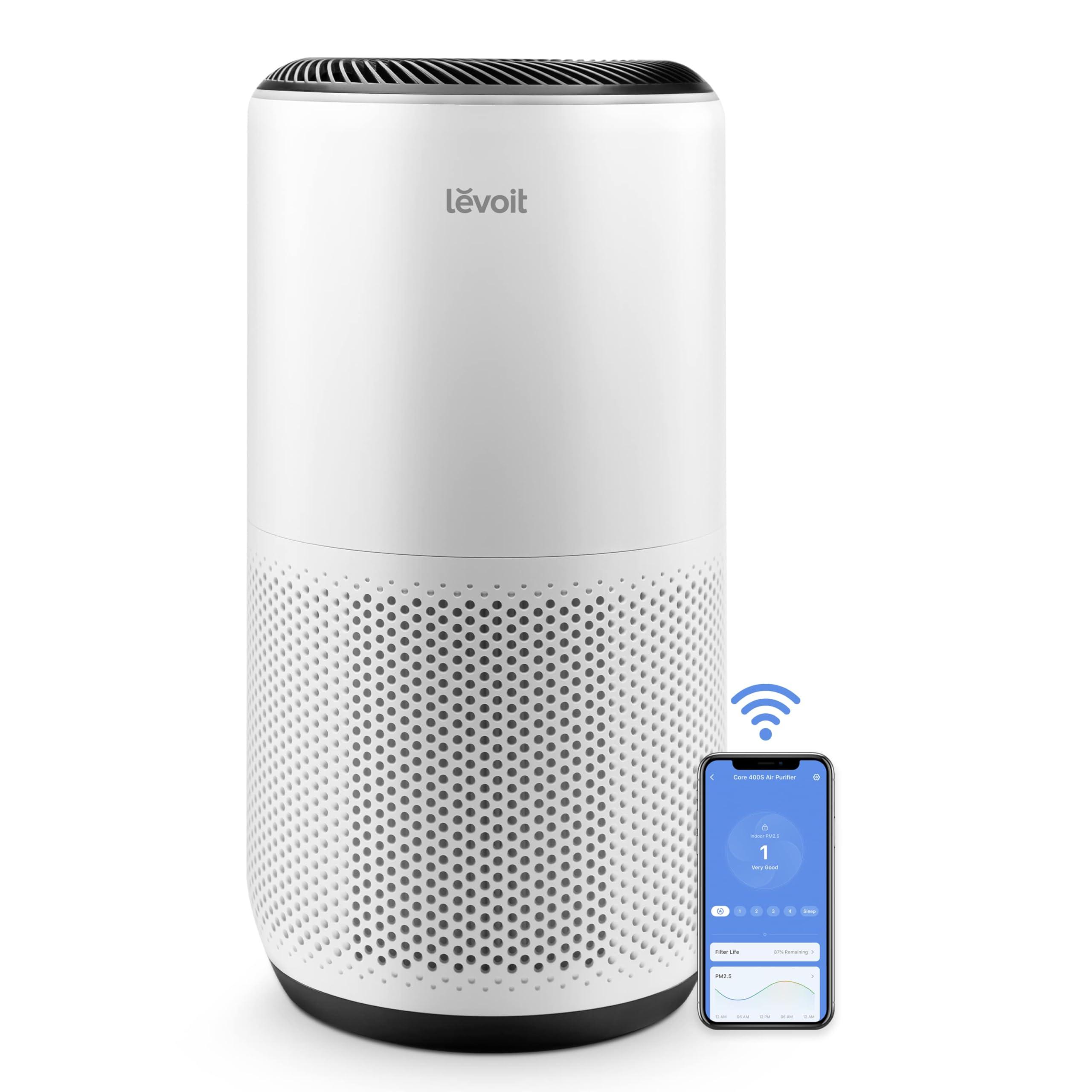In an age where clean air is becoming an increasingly rare commodity, the proliferation of smart air purifiers has heralded a new frontier in indoor wellness. At the heart of this revolution lies the Air Quality Index (AQI)—a metric designed to quantify the safety of the air we breathe. But how accurate is this seemingly authoritative gauge of air purity? As consumers invest in high-tech devices equipped with sensors that monitor particulate matter, volatile organic compounds, and other pollutants, questions arise about the reliability of their readings. Are these smart purifiers genuinely providing a clear picture of our environmental conditions, or is the data they present clouded by uncertainty? In this article, we will explore the intricacies of the AQI as reported by smart purifiers, delving into the technology behind these devices and evaluating how their measurements stack up against established air quality standards. Join us as we unravel the truth of whether these gadgets are the guardians of our health they claim to be or simply offering a false sense of security.
Understanding the Air Quality Index: A Comprehensive Overview
The Air Quality Index (AQI) serves as a vital communication tool, offering a numerical scale that represents the quality of the air we breathe. Various factors, including particulate matter (PM2.5 and PM10), ozone (O3), nitrogen dioxide (NO2), sulfur dioxide (SO2), and carbon monoxide (CO), contribute to the AQI rating. Understanding these components is crucial when assessing how effective smart purifiers are in improving indoor air quality. Although these devices often indicate real-time AQI levels using color-coded scales, the accuracy can vary based on factors such as environment, sensor quality, and calibration. Misleading readings might arise from external pollution sources that are not adequately accounted for by the purifier’s sensors.
Many smart purifiers come equipped with features designed to monitor air quality effectively. However, it is important to consider the limitations of their sensors. Here are some factors that may influence accuracy:
- Calibration: Regular calibration ensures precise measurements.
- Sensitivity: Some sensors may not detect specific pollutants or particulate matter efficiently.
- Location: Indoor placement can affect exposure to external air contaminants.
To aid consumers in understanding the validity of AQI readings from their purifiers, a comparative analysis of common indoor pollutants is essential. Below is a simple table depicting standard pollutant thresholds and their impact on the AQI:
| Pollutant | Safe Level (µg/m³) | Moderate Level (µg/m³) | Unhealthy Level (µg/m³) |
|---|---|---|---|
| PM2.5 | 0-12 | 12.1-35.4 | 35.5+ |
| Ozone (O3) | 0-54 | 55-70 | 71+ |
| CO | 0-4.4 | 4.5-9.4 | 9.5+ |

Evaluating Smart Purifiers: Accuracy of Air Quality Measurements
Understanding the accuracy of air quality measurements provided by smart purifiers is crucial for consumers seeking to improve their indoor environment. Many of these devices boast impressive technology for detecting pollutants, but the reliability of their data can vary significantly. Factors to consider include the calibration of the sensors, the types of pollutants measured, and the environmental conditions in which these purifiers operate. While some models accurately reflect the air quality in real-time, others may display inflated or deflated readings due to manufacturer variations or limitations in sensor technology.
When evaluating the performance of smart purifiers, it’s essential to look at a few key aspects:
- Sensor Type: Different sensors measure different pollutants, affecting overall accuracy.
- Response Time: How quickly a sensor reacts to changes in air quality can impact its reliability.
- User Reports: Customer feedback and third-party testing can provide insights into accuracy levels.
Above all, it’s advisable to cross-reference readings from smart purifiers with trusted air quality monitoring systems. Here’s a simple comparison of some popular smart purifiers and their reported accuracy:
| Model | Pollutants Measured | Accuracy Rating |
|---|---|---|
| Purifier A | PM2.5, VOCs | 90% |
| Purifier B | PM10, CO2 | 87% |
| Purifier C | PM2.5, Formaldehyde | 95% |

Factors Affecting Air Quality Readings on Smart Devices
Air quality readings on smart devices can be influenced by a multitude of factors, leading to discrepancies in perceived air quality levels. Environmental conditions play a critical role; for instance, factors such as humidity, temperature, and atmospheric pressure can affect sensor performance and measurement accuracy. Furthermore, the placement of the smart device significantly impacts its readings—devices positioned near sources of pollution, such as kitchens or during construction, may register higher pollutant levels than those located in cleaner environments. In addition, the calibration and technology behind the sensors can vary; high-quality sensors offer more precise measurements, while cheaper models may struggle to provide reliable data under fluctuating conditions.
Another pivotal factor to consider is user engagement and maintenance. Regular maintenance, including cleaning filters and ensuring proper functioning, is essential for devices to deliver accurate readings. Moreover, the presence of external pollutants, like smoke from wildfires or industrial emissions, can lead to peaks in air quality readings that do not accurately reflect indoor conditions. To depict how these factors interplay, the table below summarizes key influences on air quality sensor accuracy:
| Factor | Impact on Readings |
|---|---|
| Environmental Conditions | May distort sensor performance. |
| Device Placement | Proximity to pollution sources skews data. |
| Sensor Quality | Higher quality = more accurate readings. |
| User Maintenance | Regular upkeep is essential for accuracy. |
| External Pollutants | Can cause inaccurate spikes in readings. |

Enhancing Your Indoor Environment: Tips for Optimal Air Quality Management
Understanding the reliability of the “Air Quality Index” (AQI) found in smart purifiers is crucial for managing your indoor environment effectively. While many smart devices claim to provide real-time air quality measurements, it’s essential to scrutinize the accuracy of these readings. Factors such as sensor quality and placement can significantly impact the data displayed. Consider these points to gauge the effectiveness of your device:
- Sensor Types: Different sensors measure various pollutants. Look for devices with multiple sensor types for a comprehensive view.
- Calibration: Ensure your purifier is calibrated correctly. Poor calibration can lead to misleading AQI readings.
- Location: Where you place your purifier can influence readings. Avoid corners and enclosed spaces to get more accurate results.
Moreover, it’s beneficial to compare your smart purifiers’ AQI readings with established air quality monitoring services. This could highlight discrepancies and help you understand how your indoor air quality stacks up against outdoor conditions. Below is a simple comparison of common pollutants monitored by smart purifiers and their ideal thresholds:
| Pollutant | Ideal Threshold (µg/m³) | Common Impact |
|---|---|---|
| PM2.5 | 35 | Respiratory problems |
| Volatile Organic Compounds (VOCs) | Not detectable | Allergic reactions |
| CO2 | 1000 | Poor concentration |
By understanding the limitations and potential inaccuracies of your smart purifier’s AQI, you can make more informed decisions about enhancing your indoor air quality. Regular maintenance of your device and monitoring external resources can fortify your approach to creating a healthier living space.
Key Takeaways
In a world increasingly aware of the significance of clean air, smart purifiers offer a promising solution to combat indoor pollution. As we’ve explored throughout this article, the Air Quality Index (AQI) provided by these devices serves as a vital tool for monitoring air quality in real-time. However, understanding its accuracy is essential to empower users to make informed choices about their indoor environments.
While smart purifiers offer convenience and innovative technology, the variability in sensor quality and environmental conditions reminds us that no system is flawless. A critical eye and a bit of research can unveil discrepancies that might alter our perception of the air we breathe.
As our lives intertwine further with technology, embracing these advancements does not mean relinquishing our responsibility to stay informed. By approaching the AQI with a balanced perspective and supplementing its insights with additional resources, we can navigate the complexities of air quality with confidence.
Ultimately, the journey towards clean air is a shared endeavor—one that calls for vigilance, understanding, and a commitment to our well-being. As you continue to explore the capabilities of smart purifiers, may your awareness and action contribute to a healthier atmosphere, both indoors and out. Breathe easy, stay curious, and remember: the air we share shapes our lives in more ways than one.




